Wheat flour prices online
Wheat flour for sale online
Wheat flour, obtained by grinding wheat grains, is an essential ingredient used in many culinary preparations around the world. The production process involves selecting, cleaning and grinding the grain, transforming it into a fine powder that forms the basis of numerous dishes, from simple focaccias to delicious pastas.
Role of Wheat Flour in the Food Industry
The importance of wheat flour in the food industry is difficult to underestimate. It is key to the production of bread, pasta, pastries and many other baked goods. Its consistency and binding properties make it an indispensable component for the creation of doughs and batters. Additionally, wheat flour offers a wide range of options, from traditional white flour to the more nutritious wholemeal flour, allowing cooks to tailor their recipes to consumers' dietary and taste needs.
With this introductory overview of wheat flour, we are ready to explore in detail the production process of this crucial ingredient.
Wheat Flour Production Process
Grain Selection and Cleaning
The quality of wheat flour largely depends on the selection and careful cleaning of the wheat grains used in the production process. This initial phase is crucial to guarantee a high quality final product free of impurities.
Identification of Quality Grains
During the selection phase, superior quality wheat grains are identified. These grains must be free of obvious defects, such as mold, insects or moisture damage.
The selection criteria also include the size, weight and consistency of the beans. Larger, heavier grains tend to be richer in starch and protein, contributing to a better yield of higher-quality flour.
Cleaning Procedures to Remove Impurities
After selection, the wheat grains are subjected to strict cleaning procedures to remove any impurities. This process is essential to ensure food safety and the quality of the final product.
Common impurities that must be eliminated include soil residues, stones, small plant debris and other external contamination.
Modern cleaning equipment uses a combination of sieving, washing and separation to effectively remove impurities without compromising the integrity of the wheat grain.
Wheat grinding
Once selected and cleaned, the wheat grains are ready for the milling phase, where they are transformed into flour through a series of processes.
Traditional Grinding Techniques
Traditional milling techniques involve the use of stone mills or water mills, which grind wheat kernels into flour using mechanical force. These methods tend to be slower but can better preserve the grain's nutrients and flavor.
Modern Industrial Processes
In modern industrial milling plants, wheat grains are ground using cylinder or hammer mills. These mills are capable of producing large quantities of flour in a short time, but the heat generated during the process can compromise the nutritional quality of the flour.
The milling phase is crucial to determine the consistency and fineness of the wheat flour produced, as well as to best preserve its nutritional value and characteristic flavour.
Types of Wheat Flour
00 flour
00 flour represents one of the most common and versatile varieties of wheat flour available on the market. Known for its fine consistency and its ability to form soft and light doughs, 00 flour is a fundamental ingredient in many traditional Italian recipes and beyond.
Characteristics and Uses
00 flour is characterized by a particular fineness, obtained through a sieving process that removes much of the germ and shell of the wheat. This makes 00 flour ideal for the preparation of fresh pasta, leavened desserts, such as cakes and biscuits, and baked products such as pizza and focaccia.
Thanks to its ability to form soft and elastic dough, 00 flour is also widely used for the production of bread, ciabatta and other baked specialties.
Culinary Applications
The culinary applications of 00 flour are practically limitless. It is the main ingredient for the preparation of many iconic Italian dishes, such as Neapolitan pizza, fresh homemade pasta and traditional desserts such as tart and panettone.
In addition to its traditional applications, 00 flour is also widely used in international cuisine, where it is used for the preparation of bread, desserts and savory dishes.
Wholemeal flour
Wholemeal flour represents a nutritionally richer alternative to traditional white flour, as it retains all parts of the wheat grain, including the germ and outer shell. This variety of flour offers a number of health benefits and a unique depth of flavor.
Health Benefits
Wholemeal flour is rich in fibre, vitamins and minerals, thanks to the presence of the wheat germ and shell. These nutrients are essential for a balanced diet and can help improve digestive health, reduce the risk of heart disease and regulate blood sugar levels.
The high fiber content of wholemeal flour can also promote a sense of satiety, helping to control body weight and promoting a balanced and sustainable diet over time.
Use in healthy recipes
Whole wheat flour can be used in a wide range of recipes, from traditional Italian dishes to international dishes. It is particularly suitable for the preparation of wholemeal bread, pasta, biscuits and desserts, offering a depth of flavor and a unique texture.
Recipes made with whole wheat flour are often considered a healthier choice than their counterparts made with white flour, as they provide a higher amount of fiber and essential nutrients.
Differences between Wheat Flour and Alternative Flours
Corn flour
Cornmeal, also known as cornmeal, is a versatile flour made by grinding corn kernels. It is widely used in many cuisines around the world due to its unique characteristics and distinctive flavor.
Nutritional properties
Cornmeal is naturally gluten-free, making it an ideal choice for people with gluten intolerance or those following a gluten-free diet.
It is rich in complex carbohydrates, which provide sustained energy throughout the day. It also contains fibre, B vitamins and minerals such as iron, magnesium and zinc.
Use in Regional Kitchens
Cornmeal is a key ingredient in many regional cuisines, particularly in Latin America and the United States. It is the base for traditional dishes such as polenta, tortillas, corn muffins and cornbread.
It is also widely used as a thickener for soups, sauces and meat dishes, thanks to its ability to create a thick and creamy consistency.
Rice flour
Rice flour is a gluten-free flour obtained by grinding rice grains. It is known for its lightness, its ability to absorb liquids and its adaptability in gluten-free recipes.
Nutritional Profile
Rice flour is naturally gluten-free, making it suitable for people with gluten intolerance or those following a gluten-free diet. It is also easily digestible and suitable for children and adults with sensitive digestive systems.
It's rich in complex carbohydrates, but has a lower glycemic index than other flours, meaning it doesn't cause spikes in blood sugar. It also contains some protein, fiber and a variety of vitamins and minerals.
Adaptability in Gluten Free Recipes
Rice flour is a key ingredient in many gluten-free recipes, including desserts, breads, pastas and savory dishes. It can be used alone or in combination with other gluten-free flours, such as corn flour, tapioca flour or quinoa flour, for better texture and flavor.
Health Benefits of Wheat Flour
Nutritional Content
Wheat flour is a key ingredient in the diets of many people around the world, offering a wide range of essential nutrients that contribute to overall health.
Carbohydrates, Proteins, and Fats
Wheat flour is rich in complex carbohydrates, which provide sustained energy for the body. These carbohydrates are essential for supporting vital functions and maintaining high energy levels throughout the day.
It also contains a significant amount of protein, which is critical for building and restoring muscle tissue. The proteins present in wheat flour also provide a longer-lasting feeling of satiety.
Although relatively low in fat, wheat flour contains a small amount of healthy fats, which are essential for the absorption of fat-soluble vitamins and for maintaining healthy skin and hair.
Vitamins and Minerals Present
Wheat flour is an important source of B vitamins, including thiamine, riboflavin, niacin and folic acid. These vitamins play a crucial role in energy metabolism and the functioning of the nervous system.
It is also a significant source of minerals such as iron, which is essential for the transport of oxygen in the blood, and zinc, which plays a key role in supporting the immune system and healthy skin.
Role in the Balanced Diet
Wheat flour plays an important role in promoting a balanced and healthy diet.
Role of Complex Carbohydrates
The complex carbohydrates found in wheat flour provide a sustained source of energy that helps keep blood sugar levels stable. This is especially important for those trying to manage their weight or control their blood glucose levels.
As a source of slow-release carbohydrates, wheat flour can help improve feelings of satiety and reduce cravings for high-calorie foods.
Impact on satiety and energy
Eating foods made from wheat flour, such as wholemeal bread or pasta, can help keep energy levels consistent throughout the day. This helps prevent sudden drops in energy and feelings of fatigue.
Wheat flour can be included in a variety of healthy and balanced dishes, such as salads, soups, stews and vegetable dishes, to ensure optimal nutritional intake and promote overall well-being.
Frequently Asked Questions about Wheat Flour
Frequently asked questions about wheat flour reflect people's interest and curiosity about this key ingredient in cuisine around the world. Answering these questions can help clarify doubts and provide useful information to cooking enthusiasts and lovers of healthy food.
What is the difference between 00 flour and wholemeal flour?
The main difference between 00 flour and wholemeal flour lies in the wheat processing and refining process. 00 flour is obtained by milling soft wheat grains without the bran and germ, while wholemeal flour contains the entire wheat grain, including the bran and the germ.
00 flour is characterized by a pure white color and a fine consistency. It is particularly suitable for the preparation of leavened baked products, such as bread, pizza and desserts, as it gives them a soft and light texture.
On the other hand, wholemeal flour has a darker color, due to the presence of bran and wheat germ. It is richer in fibre, vitamins and minerals than 00 flour and is preferred for the preparation of wholemeal products and healthy recipes.
Is Wheat Flour Suitable for People with Gluten Intolerance?
Wheat flour contains gluten, a protein found in wheat, which can cause digestive problems in people with gluten intolerance or sensitivity. Therefore, wheat flour is not suitable for people with celiac disease or gluten sensitivity.
However, there are gluten-free alternatives available, such as corn flour, rice flour, coconut flour, and almond flour, which can be successfully used as substitutes for wheat flour in many recipes.
Which Type of Wheat Flour is Best for Pizza?
Choosing the best wheat flour for pizza depends on your personal preferences and the type of pizza you want to prepare. However, many professional pizza makers prefer to use "00" wheat flour due to its fine texture and ability to form a thin, crispy pizza.
On the other hand, some pizza enthusiasts prefer to use wholemeal flour for a more rustic and nutritious pizza. Whole wheat flour adds a slightly more pronounced flavor and denser texture to pizza, making it an ideal choice for those who prefer a thicker, heartier crust.

-
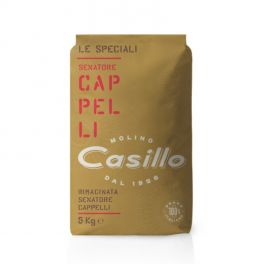
Senatore Cappelli Flour Molino Casillo Le speciali 5Kg
Ready to ship in 1 days, delivery time 1-3 days -
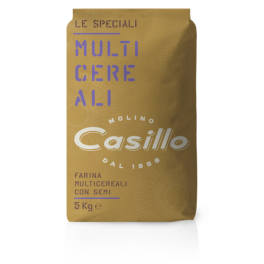
Molino Casillo Le speciali Le multicereali flour 5Kg
Ready to ship in 1 days, delivery time 1-3 days


 Italiano (IT)
Italiano (IT)  Deutsch (DE)
Deutsch (DE)  Français (FR)
Français (FR)  Español (ES)
Español (ES)  Polish (PL)
Polish (PL) 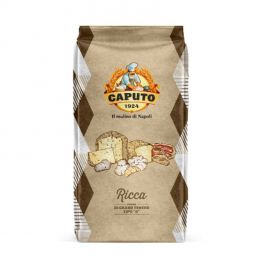
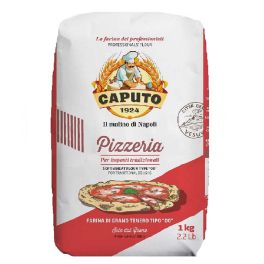
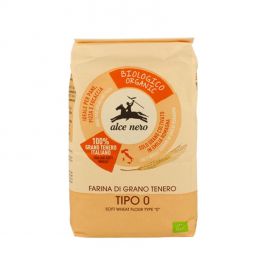
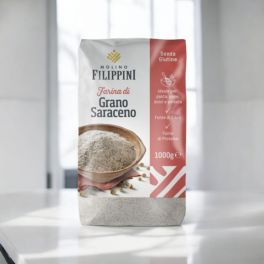
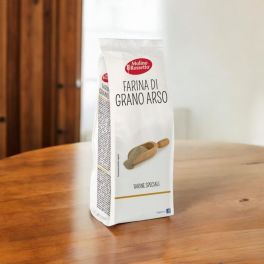
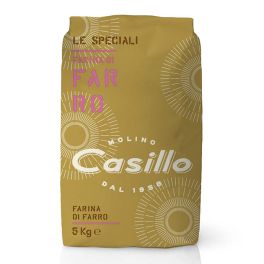
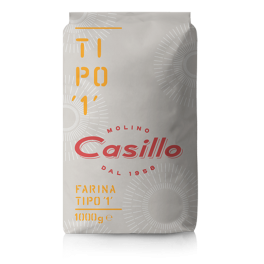
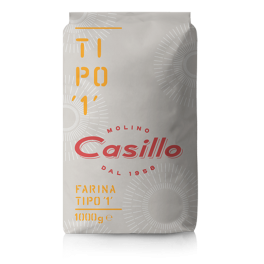
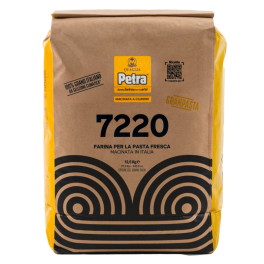
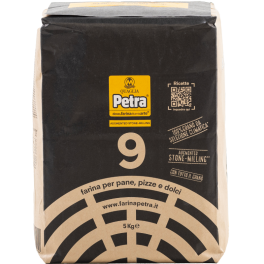
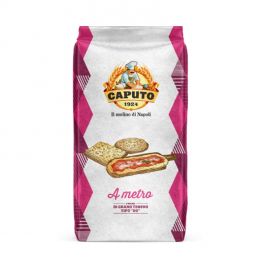
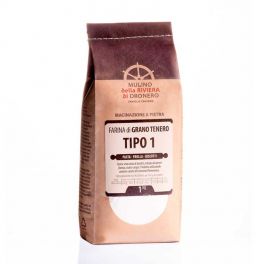
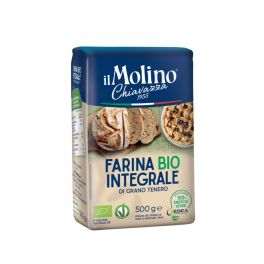
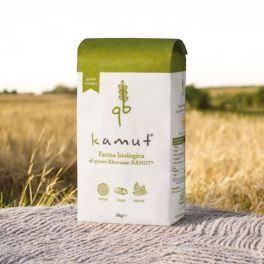
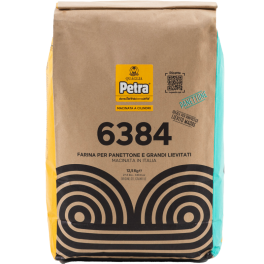
This website is protected by reCAPTCHA and the Privacy Policy & Terms and Conditions of Google